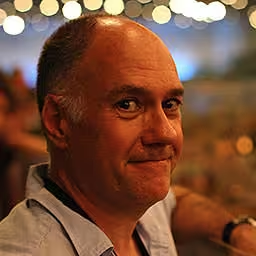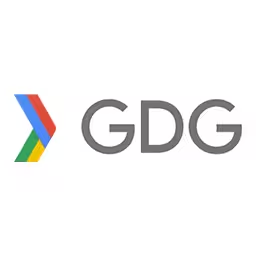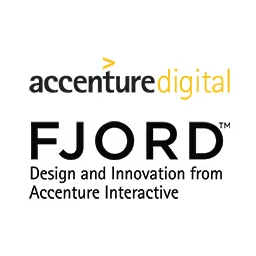Danny Gregory

Danny Gregory spent most of his life not believing he had the right to consider himself an artist in any way. But then he started drawing about fifteen years ago and it changed his life. It led him to travel, to meet people, to get books published, but most of all it transformed the way he sees the world around him and how he experiences every day.
Danny believes that everyone has the same opportunity. Not to become a Professional Artist but to make art into a regular part of your everyday life. It doesn’t matter what your elementary school art teacher said, or your parents, or your boss. You have it in you to draw, to play an instrument, to write poetry, whatever you choose. You can and should express your self. Regardless of what you fear anyone else may thinks of the results, you can become a creative person and achieve a new view of the life you lead.
Danny often wonders what the world would be like if every adult was as creative and free as we all were as kids. He thinks it would be calmer, lovelier, more peaceful place. And he’d like to do something about it.
Talk: Everyday Matters – The Art of the Illustrated Journal
When was the last time you drew every day? In art school? In high school? In pre-school? What if you could get back into that habit, filling sketchbooks with ideas and observations, expressing yourself, stifling your inner critic, having fun, making stuff?
Danny Gregory will inspire you with his own story of creative discovery — how he began drawing again in his mid thirties, keeping an illustrated journal of his day-to-day life, and how this practice opened him up to all sorts of new experiences and discoveries. His example, his books and his website have inspired many thousands of people around the world to rediscover their own creative spark. His first illustrated memoir “Everyday Matters” lent its name to a movement that now includes professional and amateur artists around the world who document and share their lives through drawing and writing.
Transcription
Danny Gregory: Thanks very much. And Marc, thanks again for inviting me here. I’ve only been to Berlin once before, and that was when I was hired to do watercolors at the International Sex Trade Show here in Berlin. I was going to show you pictures, but my wife told me that that would be a terrible mistake, so I’m not going to.
But I am really excited to be here in a room of creative people. That’s my favorite place to be, to be among people who make stuff. And I want to talk to you about making stuff, about creativity, about art. But first of all, what qualifies me to talk to you about this subject, because, to be honest, I’m not a coder? You know I’m not a developer. I’m not a designer. But I’m somebody who believes very much in the importance and the power of creativity and how creative people are really essential to the world.
I don’t think that everybody acknowledges that a lot of the time, but I believe that we are, and now more than ever because we are–and I’ve heard this theme a couple times today, so that’s really exciting to me is we are–sort of an international network or international sort of community of problem solvers. And we can sort of mobilize our creativity in all kinds of ways to solve problems. Frankly, right now, the world has lots of problems.
We have the ability to show how we can discover fresh answers, how people can take creative risks without everything spinning apart, and how we can solve lots of the brand new challenges that we’re facing. I think that things are changing more than they ever have. I hope that today what I can do is to encourage you to embrace all of your creativity. In other words, in all of its different forms. I want to do that by telling you a bit about my own story.
I want you to think of yourselves not just as–I don’t know–engineers, coders, developers, technologists, designers, entrepreneurs, or whatever it is that your job title describes you as, and also not as doodlers, amateur guitarist on the weekend, the occasional cook, or an Instagram photographer. I want you to think of really how you can see yourself as a true creative, as an artist without barriers, as a complete person because the world needs you.
Audience: [Laughter]
Danny Gregory: If only it was that easy. It’s weird, I have to say, being here, not in New York, which is where I’m from, tonight of all nights. But hopefully I’ll go home again. We’ll see.
Audience: [Laughter]
Danny Gregory: But I want to tell you, so I’ve had two careers as an artist, and I want to first tell you about the first one. Here I am when that began, still an emerging artist, not represented by any galleries. My work wasn’t in any major museum collections. I didn’t have much income to speak of. Most of my work was being shone on refrigerators at this point.
But I was very creative when I was little, and I loved to work in all ways, in all kinds of media. I liked to draw. I liked to paint. I liked to sculpt. I liked to write plays, to perform, to direct, to make sets out of living room furniture. I was a heck of a dancer. I could compose music. I would write entire songs that I would perform by drumming on my sister’s skull.
For me, drawing was instinctive, just like it is for kids everywhere. Just give me a crayon or a sharp stick or a wet finger and I’d start making things, drawing things, doing stuff. That’s the way we all were.
For me, making drawings and painting and stuff like that was a way of expressing how I felt, of taking the things that were inside me, perhaps my fears, perhaps the new things that I was learning, things that I couldn’t express in words, I would put them out there on paper. That was really, that process of expressing myself, expression how I felt, of getting it out of my head and being able to look at it, that’s what it was all about for me. It wasn’t about the final product. It was about that process.
I wasn’t alone. Art wasn’t just for the artsy kids at that point. All my friends who were going to grow up to be bankers, engineers, dentists and whatever, they all did it too. We all did it. I lived in sort of a virtual creative community, sort of a utopian commune of artists, and we lived in the now. We didn’t judge what we did. We just had fun doing it, and that was the point of it all.
That came to an end. I want to show you the next chapter in my story, which is, this is me about the time that I ceased being an artist. As you can see, my mother was still dressing me.
Audience: [Laughter]
Danny Gregory: My mother was still cutting my hair. I had hair. But the question is, what happened to me? What happened to that artist that I had been? Well, I had a new set of concerns at this stage in my life.
Instead of drawing, I became embroiled in all the joys of being a teenager, of being worried very much about what other people thought of me and what other people might say. Often I found that it was easier to judge others lest ye be judged and to get it out there. I was very worried about fitting in, about looking cool, about being one of the cool kits.
I also, at this point in my life for the first time, discovered the price of being wrong, something that had never concerned me before, but now suddenly mistakes seemed like a deadly business. I also came to understand the truth about drawing, and I came to the conclusion that drawing wasn’t practical. It didn’t fit in with my plans for what was important.
Drawing wasn’t going to get me on the football team. It wasn’t going to get me a basketball scholarship. It wasn’t going to get me a date. Drawing was something that was for babies, for kids playing with crayons. I was far too mature for that.
We were studying geometry and algebra around this time, so I was very into theorems, and I came up with this theorem about the meaning of drawing and why it was obsolete. Drawing is no longer just drawing. Now it’s a thing called art. Art is something that’s made by artists, so it’s a grownup profession.
Basically, there seemed to be two kinds of artists. There were famous artists, successful artists, wealthy artists, the guys like Andy Warhol who were on the cover of magazines, who were celebrities, and powerful and successful. Then there were people like the guy who helped out my middle school art teacher. There’s the guy who worked at the coffee shop and who they let play on Thursday afternoons play his guitar.
There were a lot of people who sort of said that they were artists, but there didn’t seem to be a lot of evidence of that, and most of the grownups that I knew didn’t really think an awful lot of those people. So it seemed to me like there was this kind of dichotomy between this incredible long shot of becoming famous–again, I didn’t know anybody who was a famous artist–or being, frankly, a loser, which was a lot of these other people who I judged so harshly. And so to draw sort of a connection between my theorem, drawing equals basically utter failure. Q.E.D. is the connection.
This wasn’t just something that I had made up myself, arrogant and unpleasant as it may sound. This was something that I encountered a lot in movies that I would see, TV shows, books, and things that I would overhear grownups say.
Take this guy. What do we know about Vincent Van Gogh? The thing that we know about him is he’s crazy and he killed himself. He cut off his ear and gave it to a prostitute. He was unable to look after himself. His brother had to support him. He never sold a painting. Then he went out in the wheat field, and he shot himself. There you go. One of the greatest artists, basically another loser, it seemed.
Jackson Pollock: What did I know about Jackson Pollock? Well, he was a hopeless drunk. There was a movie about him around that time, and it showed how he was always going off on various tangents. There’s a famous scene in that movie where he’s at his patron’s house and he pees in her fireplace. Then ultimately what happened to Jackson Pollock is he drove his car into a tree when he was drunk and killed himself. He killed the young woman who was sitting next to him, so it was not only a suicide. He was a murderer.
But the big thing about Jackson Pollock that I knew was that any four-year-old could make a Jackson Pollock painting. Just throw some paint around and there you have it, so he was a conman as well, it seemed to me, and that seemed to be a thread. I saw a loser, a fraud, a murderer, suicide, and a conman.
This guy. They say that Falco is back here, which is very exciting. But anyway, you’ve seen this movie, Amadeus. [Laughter] Crazy laugh, right? What do we know about Amadeus? Wolfgang Amadeus Mozart, he was crazy. He was irresponsible. But that movie also tells us that he was a fraud also. Why? Because he never wrote any of the music. God wrote it and downloaded it into him, and he just had to write it on a piece of paper.
Audience: [Laughter]
Danny Gregory: The hardest thing he had to do was use a quill. What became of Mozart? Well, he died when he was 35, penniless, in an unmarked grave. [Laughter] So anyway.
Michelangelo, he got played by Charlton Heston. What do we know about Michelangelo was that he was stubborn. He was arrogant. He was self-destructive. He was an asshole, basically. And he was always fighting with his client, the Pope. You may remember that from the movie. If you’ve seen this movie, The Agony and the Ecstasy, that’s what basically it was all about. Not the ecstasy part. There was very little of that. But there was a lot of whinging, crying, and complaining.
But then the ultimate thing, which is La Vie Boheme, The Bohemian Life. You go and become a starving artist living in a garret in Paris catching syphilis from your prostitute model girlfriend who is dying of consumption. Then ultimately you die a lonely death, forgotten and ignored.
Whatever. Better to go to law school. That was sort of my conclusion was to focus on writing. That’s what I really did. I said, to hell with all this art business, and I’m going to be focused on writing.
I did. I stopped drawing completely for 20 years. I didn’t draw. I didn’t make anything like that. Then I went to Princeton. I studied political science, and I was a White House intern pre-Clinton - fortunately.
Audience: [Laughter]
Danny Gregory: Then ultimately I did what, frankly, a lot of frustrated, closeted, creative people do. I went into advertising. I worked in advertising. I started as a copywriter because I was a writer, not a visual person. I worked my way up the ladder. I went from being a junior copywriter to the copywriter, copy chief. There are a lot of levels and titles in advertising: associate creative director, creative director, executive creative director, chief creative officer, blah, blah, blah. I worked my way up to being to the top of the ladder.
But if you were sitting next to me in some sort of meeting and you looked over my shoulder at my notes, they looked like this, and you would see that that five-year-old was still in there, still trying to make his mark. If you asked me about it, “Hey, I like your drawing,” I would say, “What are you talking about? Let’s go back to the agenda, J.P.,” and I would just turn the page and move on. I wasn’t interested in talking about that.
I was living in Manhattan. I was living in the center of it all, it seemed to me. I was living really the life that I had planned on when I was 13, 14, 15. I worked my way to a nice position, and I was married. My wife, Patti, was a fashion stylist, so she was in the fashion business, and we lived in Greenwich Village. Everything was great, and then we had this person. His name is Jack. He’s our son. It seemed like we had achieved all we wanted.
June 9th was a warm day. It was early summer, but it was very warm that day. I was working with a photographer who took this picture of me that day actually, but I wasn’t working with him in the sense that I was modeling for photographs. That wasn’t the point. I was working on a global ad campaign for IBM. This was in the mid ‘90s, and IBM was just starting to go out onto the Internet for the first time. I was writing all the ads that defined what IBM would be doing and what IBM’s message was to the business world about the Internet and what its promise was. I was in the middle of this huge project.
My wife, Patti, meanwhile was getting ready. She was heading to work, and she was doing a shoot that day, and she had a big chocolate birthday cake that she was carrying as a prop to use in this particular shoot. She went to the Christopher Street Station in Greenwich Village, and she was waiting down on the platform.
The train rolled in, the number nine train rolled in. As it did, for some reason that nobody has really been able to explain, she fell onto the tracks. It might have been because it was a hot day. It might have been because she was in a rush. Nobody really knows. She fell onto the tracks and three cars of the train rolled over her.
She wasn’t killed, but the train broke her back, and it crushed her spinal cord. She was left paraplegic. For the rest of her life she was in a wheelchair. On this sunny morning everything changed in an instant.
Patti was in the hospital, Saint Vincent’s Hospital in the Village for a month, and then she moved to Mount Sinai. She had a lot of operations to stabilize herself. She went to physical therapy. Jack took his first steps, actually, in her hospital room.
But she wanted to get out of there, and she wanted to get on with her life. She wanted to get back to being normal. She wanted to get back to work. She wanted to get back to being a mom. She wanted to get – she wanted to figure out how to live in this new way, but to have everything we’d always had. That’s what she did. She was a tenacious person, creative, strong, and she did it with a smile, and she accomplished incredible things despite this horrific thing that had happened.
On the other hand, I didn’t understand what had happened. I mean I understood it, but my mind was swirling with all of the things that had happened because this way that I had been living since I was a teenager, this path that I had been on had been completely thrown aside. My mind was swirling with questions, thoughts, and fears. How could this happen? What did I do wrong? Did we cause this? What am I supposed to do now? How do we live like this? What’s going to happen next? Is this some horrible act of fate of God? Are more things going to happen? How the hell do we deal with it? Blah, blah, blah, blah, blah.
I spent a lot of time living in here, and that was a very dark, cold place. I wasn’t living in reality, which I think Patti was. Patti was seeing that there were things to do, and she was doing them. I was thinking just about this very dark vision.
Now, the fact is I had very little information about what it would be like. I’d never known anybody in a wheelchair before. Neither had Patti. I had no notion of how she would deal with it. I had no information, so I created information. I created it, created it, created it, thoughts, fears, multiplying on and on in an echo chamber of stuff going back and forth.
What I did next is I did something that I had done really since I was little, which is, I turned to books. I always loved to read, but I also liked to write in books. I like to write down what I was thinking.
Here’s my diary from when I was nine. I read you a couple of entries. “Sunday: I got a fish. Thursday: Fish died.”
Audience: [Laughter]
Danny Gregory: But I continued doing that: books, writing stuff down, getting up every morning, writing down my thoughts, writing down my concerns, and planning out pictures of what everything was going to be like, blah, blah, blah. I filled lots of books. These are literally these books that I – some of them I even bound myself just because it somehow felt like I was in control if I could put it down on paper, if I could own it. Then somehow it was all going to be manageable.
But one day, and I have no explanation for this. It’s completely a mystery as well. I had this urge to take a chair and a piece of paper and a pen, and go into my bathroom. I opened the medicine cabinet, and I looked at everything that was in the medicine cabinet. I decided to start drawing it.
I drew the outline of the shapes of all the bottles and boxes that were there on the first couple of shelves. Then I worked my way down, and I did it for the rest of them. I drew the outlines of all these boxes. The first drawing that I had done since back in my prepubescent days, really, was first looking at this thing and then filling in the details, just filling in all the stuff that was in those shapes and doing this drawing.
It was a revelation to me, a revelation. It wasn’t a revelation on the kind of level of ceiling opening and angels coming down or the floor opening and the toilet being swallowed or anything like that, but it was definitely a new feeling. It was a feeling of being in the now, being present, being here in my bathroom looking at this stuff, but knowing that it was solid, that it was real. Feeling also kind of a meditative calm that came from this, of this feeling of being here and feeling like my brain had had a spa day. It’d been taken to the sauna and had the wrinkles massaged out of it. Everything felt good, and I felt centered.
The next day, Patti was sitting on the couch, and I decided I would try to draw her. And so I got another piece of paper, and I drew her as she was sitting there. In this process of drawing her, I saw her for the first time since this accident had happened.
I saw her not as a problem, not as a poor thing, not as a wheelchair in our lives. I saw her as the girl that I’d fallen in love with. I saw her as my best friend. I saw her as the funniest person I know. I saw her as Jack’s mom. I saw her as this beautiful person sitting in front of me. And I felt connected to her, really, honestly for the first time instead of seeing her as a source of fear.
Somehow there was this sort of magic pill, I guess, that I discovered, which I didn’t really understand what was going on, but I knew that these two experiences were really powerful and important to me. And so what I would do is every day I would take a break from the office. I would go at lunch, go out to the park, sit down, and just draw whatever was in front of me. Sitting on a bench eating a sandwich, draw whatever was in front of me. It didn’t really matter. It could be a garbage can in this case. Just sit there for ten minutes and do this and have this moment to myself.
As I was doing this, I started to think, what is this exactly that I’m doing? Why does this work? What actually is drawing? What is actually going on? How do you do it maybe better than I am doing it? Maybe there’s more to learn about it. Maybe I can get deeper into it.
I mean in some ways I was like some weird religious convert who had discovered God, but now needed to go to church and learn other stuff. I don’t know, but never have had that experience exactly. But I thought, how do I learn more about this? How do I understand it?
I would go and get books. Go to into an art supplies store or a library and pull out some books. There was a lot of this sort of stuff. This wasn’t really what I was looking for. This kind of stuff made me feel like drawing had certainly progressed since the days that I’d been doing it as a child. But it was a very intellectual kind of cerebral thing, and that’s not what I was looking for. I was actually looking for the opposite.
I also knew that I didn’t want to take art classes. I didn’t want to take drawing workshop at the local whatever. I’d hated art classes in school. I didn’t like the teachers. I didn’t like the experience. I didn’t like being graded on a drawing. I didn’t want to sit around drawing a bowl of fruit. It just didn’t have anything to do with what I was looking for. I figured I had to kind of figure this out myself.
But then there was the big issue of talent. Talent, I think, is something that we all confront when we’re trying to do something new, something that seems interesting to us is do we have the right to do it. Were we born with a gift? Somehow some people miraculously, you know, Willy Wonka sent them the golden ticket, but I knew that that wasn’t the case with me. But what was talent and can on proceed without it?
I wondered about this guy. This guy was like me. He started to draw kind of later in life, and he was doing these kind of drawings that, I mean, it’s awful. Drawing with, I don’t know, a lump of coal or something. But within a not very long amount of time, a few years, he was doing this. He went from this kind of painting that looks like it was painted sort of with a cabbage, and then he was painting this. So within six or seven years, he progressed from this to this.
I thought, well, van Gogh, did he have talent, because it sure didn’t look like it when he started? Is that how he was able to do what he did was because somehow this talent? Where was that talent earlier? How did he uncover it, or did he get it somewhere? Could you get it? Could you find it?
The more I learned about van Gogh, van Gogh painted, in total, for ten years. He started when he was, I think 27 or 28, and he did it for 10 years. In those 10 years, he did about 1,000 drawings that we have–he probably did a lot more, but 1,000 of them have survived the 140 years since his death–150 watercolors, and 870 paintings. He painted his ass off. He painted all the time. He painted a painting a day during certain periods of his life. He really, really worked hard.
People didn’t support him in what he was doing. He tried apprenticing for people. He tried going to art school. He went to art school for about a month and a half, and they basically kicked him out. He just figured it out, and he just kept working.
I thought to myself, all right, so maybe the key, maybe I’m not going to become van Gogh, but the key to getting better at this, at feeling more fluid and learning more about it, is to just do it. Just keep doing it and essentially develop drawing muscles because talent is just another word for just doing it, working hard, believing in what you’re doing, keep doing it, keep showing up, have a habit, don’t allow yourself to falter, don’t listen to the voices in your head that tell you not to. And over time, you will get to this place where you have giant drawing muscles.
That’s what I had to do was to figure out, okay, so how am I going to do this? How am I going to get giant drawing muscles? What’s going to be my process that’s going to keep me interested, committed, and passionate in order to get to that point where I feel more and more confident in it.
I had to figure out also what the hell I’m making art about. What’s my subject, right, because, when you look at great art when you go the museums or whatever or look in books, there are things like landscapes, there’s naked ladies, there’s Jesus, there’s bowls of fruit, and there’s powerful people. But generally, it’s nothing that was of particular interest to me. I didn’t want really to spend my life doing this. I didn’t think that this was going to sustain my interest and keep me to get those giant muscles.
And I knew that I didn’t care about – I didn’t really want to hang art on the wall. That seemed sort of unnecessary. I had paintings in my house already. I didn’t want to sort of enter contests at the local whatever. I certainly didn’t want to be in galleries and do all that stuff of the art world, the art world as an industry. That had nothing to do with what my pursuit was.
I was doing this essentially for me, and so I came up with this idea of art with a small “a.” All that stuff is Art with a big “A”: museums, galleries, critics, art school, and all that stuff. But maybe art with a small “a” could just be things like my dog shitting on a newspaper, or it could be just what I ate. It could be just when I was washing dishes. It could be just the moments of my life. Couldn’t I make art when I was unpacking the groceries? Do I have to paint classic still life or could I just paint the junk that was on top of Patti’s desk? Could that be my subject?
Is there any limit to what I can draw as long as I don’t get arrested? Just fitting it into the moments of my day seems like it could make it possible. If I go with a friend to have dinner and was sitting, waiting for the waiter to bring our food, just draw the junk that’s on the table.
Take a slice of toast and treat this piece of toast as if I am an astronaut landing on Mars, and I’m going to study this landscape, and I’m going to really get to know it. I’m going to map every nook and cranny, and I’m really going to be present as I study this piece of toast. I’m really going to get to know it.
I’m going to be aware about the things that are in my life that are important or everyday: Bacon before and after.
I was on a flight to Chicago. It was a terrible airport. They gave me – these were the days when they still gave you something on a plane, and they gave me a little box. It had this really small apple and some cheese and a cracker in it, so I spent the entire flight drawing this apple, taking a bite out of it, drawing it again, drawing it again, biting it, biting it, biting it until I’d done all this violence to the apple and there was the core. Then I’d proceeded with the rest of it. Then I landed in O’Hare. I said, great, that was a moment passed.
Things that I never pay attention to. I have two of these. I’ve never really studied them particularly carefully, but now I know. There’s that expression of not knowing the back of your hand. Studying the back of my hand, I started to realize, like, that that was my grandfather’s arm. Like I was somehow getting my grandfather’s arm. I remember seeing that at the dining table, that arm, and suddenly there it was - mine. Yay.
This is the view out of our bedroom window. This is the building next door, something I’d looked at, not really looked at. It was out there, out the window for years, but now I know it. I mean I know every, literally every brick, as you can see. I know every tree that lives on top of that building, every air conditioning vent. I know it really, really well.
On top of the McDonald’s on St. Mark’s and 4th Avenue. One day I was walking to work and this pigeon flew like really close to me and flew up onto this building across the way. I looked up at the building, and it was, again, down the street that I’d walked a thousand times on the way to work. But I suddenly thought Edward Hopper. You know Edward Hopper lived in my neighborhood a long time ago, and I thought, well, maybe he was influenced by that. Maybe that’s where – maybe this had something to do with that.
Anyway, I studied that, the top of that building. I thought this is really cool. This is just a moment, these rooftops that I’ve never noticed, never paid attention to.
I lived in Los Angeles for a year a couple of years ago, so I was living in this brand new neighborhood. I decided I really wanted to get to know it. It was so different from New York, so I had all these cardboard boxes that contained all this stuff that we had shipped from New York to our house in LA. I opened all those cardboard boxes, and I started to do a drawing of our street and all the houses, the cars, and the stuff. I think it’s three or four meters long, that little drawing, and I liked it, so I decided to do one going in the opposite direction as well just to get to know my neighbors in my neighborhood in a way that I hadn’t before.
Watching TV, a TV commercial comes on, and you have that option of freezing the frame. That’s what I would do. I would freeze the frame, and then I would just draw whatever was on the screen. When I was done drawing the screen, the commercial was over, and I could fast forward and continue watching the show. Now, as a person who’s livelihood was advertising, this is not perhaps something I should be encouraging other people to do, but for me it was like sitting there watching TV. By the end of the evening I had filled a page with drawings, and I had a much richer experience than just another night of channel surfacing.
I was interested in compressing my time down and thinking, trying to live more consciously in every minute of my life, so I decided to do a series of drawings of what were the first two minutes of my day like. When you first wake up, that first minute, it’s like you’re brain computer turns on and the screen warms up.
There you see whatever you’re looking at that moment. To me it was this dark corner of my room, and you could see, sort of in the shadows, some of the pictures hanging on the wall, kind of hard to tell what things are. My dog popped his head out to see if I’m ready to get up.
Stagger into the bathroom. Stagger in and fill the kettle up. Looking out the window and see the superintendent of the building next door sweeping down there. My dog walks out onto the terrace and breathes that first morning air.
There it is, like a minute, 90 seconds, whatever it is, but I felt like I was being conscious of that minute. Trying to be conscious of these little, tiny corners of my life. Sort of like Instagrams of my life. These little moments didn’t really – just to fill those frames, those frames of the film of my life, I guess.
Also just start to appreciate the things around you, things that I had. My wife and I were married in June, and each June we would get peonies. Peonies only come out for two or three weeks in early June, and then they’re gone. I painted these peonies that we got. Then soon thereafter they were gone. Not in order to have a painting of flowers, but to capture this moment of these peonies forever before they would vanish.
Or these boots, these boots that I’m wearing now. When I first got them, I studied them, learned a bit about them. They’re from Tasmania. What does that mean? Try and understand them a bit, write a bit about them, and do their portrait.
My mom knitted me some socks, so I drew them and sent the drawing to her to thank her just to be appreciative.
Money: There’s always times when I feel like money has this magical hold over me or over us, and it is a very strange thing. American money is all these kind of cabalistic symbols inside of it and all this incredible engraving, so every so often when I’m worrying about money, I’ll sit down and study money and make money, make some money and study it, really get into it and understand it.
This is all happening in sketchbooks. I was drawing in a book. That book would become a diary, a record of my times.
I want to show you just a really quick flip through of one book just to give you a sense of what this means. This is a book that I did in LA.
[Music played and video played]
Danny Gregory: Thank you, Amadeus. But I spent a lot of my time in – most of my waking hours working, and so this wasn’t just about the breakfasts and the visits to the park. It was also about being more conscious of where I worked, and this is a building I worked in for about nine years. We would all walk into heads down, walk in the building. Walk out of it heads down and walk away. It was important we could get it, to understand it, to own it, to study this building and recognize how important it was in my life. Or this kind of a scene that was part of like every day, this complex tangle of technology to just sort of sit there and follow the wires and try to understand it better. Sitting on an endless conference call.
This is just moments. I decided every two hours in my day I’m going to stop for five minutes and do a drawing of where I am and what I’m doing, and just make this sort of little almost like a storyboard of my experience.
When I travel, I also want to be present. I want to be able to see where I’m going. I want to understand it better. I want to sort of get more out of the experience of traveling.
Over time, I’ve managed to kind of boil my kit of things down, so I carry a moleskin that is essentially the same size as my phone–my phone is gigantic, but the moleskin is small–a little plastic watercolor brush, and then I made this little tiny watercolor set. This is it. And so I can put that in my pocket, and I can have watercolors and a pen and a drawing book with me wherever I go, and so I can kind of capture the experience - capture the experience.
This is something that we’ve all gone through. Boarding, the call it, right? Sitting around waiting to board, waiting to be board, sitting, looking, and thinking. Most people in this situation, you read a big, fat James Patterson novel, you check Facebook, you take a nap, or you eat some strange sandwich. For me, the opportunity to look outside and to check out this plane that I’m about to put my life into, make sure that the windows the open, maybe see if my bag gets loaded, make sure there’s no maintenance guys weeping underneath the plane or anything like that. Just, again, be present.
In the plane itself, it’s tempting to spend the whole time staring at the screen on the back of the seat in front of you, but also I could be checking out this environment that I’m in. This is drawing that I did traveling. I was reading a book, so I drew a picture of the author when he was a kid, and then I also drew the cover of the book. Then that was the sort of square meal they gave us. Then this is the map. I was flying to Kuala Lumpur, and that’s the map of where I was going and how I was detouring through Hong Kong.
If you’re flying across America, and it’s clear enough and you’re flying low enough, you see the whole country come beneath you. For me, this opportunity to have basically like these slices of America sliding under the plane. They appear in the window, and you can spend about two minutes drawing them. Then it goes away. Then you see. Then the next one comes, and you see towns, mountains, farms, and rivers, all these things. If you draw them all, then you’re in New York again and the time has passed. That was something that I liked to do.
This is in Rome just walking down the street and seeing this incredible newspaper office that had this beautiful old sign. I felt like I was the only one who had ever noticed this. I kept craning my neck up at it. People would look at me like, “What the hell are you looking at?” but that was common.
This is in Malaysia. This was a Hindu tomb, a really, really beautiful, elaborate tomb for a dentist who had died a couple years before.
Thailand.
This is, I think, the Dominican Republic, sitting on the beach.
In Jerusalem, these are olive trees on Mount Olive, actually, and these beautiful old trees that had been lashed by the wind and had been in this sort of incredibly historic place. I wanted to spend some time with them and to understand them.
This tree, it’s in Los Angeles in Santa Monica, and it kind of grows out of the center of this hotel. This tree must be 120 years old, probably. It’s certainly over a century old, so it’s older, basically than Santa Monica. When it was a sapling, Santa Monica was just a beach and a desert. Somehow miraculously it survived, and it’s kind of honored now. I thought it was just a fantastic tree, and I wanted to spend some time with it.
Here are some fish I spent some time with. Fish are interesting to paint. They’re always moving, of course, and they’re at different levels of the water. But if you spend enough time watching them, and you get into their rhythms, and you observe the patterns in what they do, you can draw and paint them.
This is in Beijing. I was walking down the street, and there was an alleyway. There was this pile of trash, and there was this bunch of chickens and a couple ducks that were wandering around pecking away at this pile of trash. I was looking at these pigeons, and every single one of them was an individual. Each one had a personality. They had a different kind of face. They were all really busy doing this.
I thought, we’re in the middle of Beijing. There’s like 20 million people here. It’s this giant city. They’re pulling everything down and building new stuff. You don’t really give a shit at all. You’re just chickens going about your business. And so I spent some time sort of studying them and getting to know them.
I found that the more that I drew, the more that I wanted to find and have new adventures, find new things to draw, new things to write about, new things to experience. I started to notice phenomena like these are the thing that you see in New York a lot, just dogs, dogs in clothing. As I say up there, “Unlike people, most dogs look better naked.”
I started just collecting these drawings and going to the zoo. I love old sort of scientific notebooks and things like that where people take notes and have little callouts. Louis and Clark, Darwin, and people like that just exploring, so I liked to kind of fantasize about doing that when I go to a zoo.
These are drawings that I did walking down my street one day and noticing all the stuff that people have thrown away. Just on one morning there was so much good stuff, and so I decided to spend some time with these things and draw them, realizing that they’d be in the dump soon, but they had been in somebody’s house the day before. That seemed sort of sad, and I felt like I should pay homage to them.
Then I started noticing people fish in New York, fishing. New York, Manhattan is an island. We’re on the river and by the ocean, and so there’s a lot of people fishing, which is surprising. And so I went around, and I would catalog the different ways that people were fishing, finding out what they were catching, hearing their stories, writing down their recipes. I discovered that, you know, I mean it occurred to me that Manhattan is a fish-shaped island, so I did this kind of map with all the different fishes that live there.
This is a drawing of just trying to think about the origins of all the ingredients in a cup of coffee. Where do they all come from, all the different things that have to go into making a single cup of coffee?
This is drawn at the Nashville Country Music Hall of Fame where there are so many beautiful instruments that are part of the history of this music for, and so I drew a lot of just the necks of mandolins, guitars, and banjos just trying to understand them.
Beijing again. These are just different three-wheeled vehicles, of which there are many in Beijing.
I went around my neighborhood, and I met all of the homeless people that I could, people who I just walked by many times before. I thought I should sit down with them and hear their stories, buy them lunch, chat with them, maybe do a drawing of them, and write down their story. That was a really interesting experience to kind of get to know these people who are my neighbors that I had ignored.
This is a set of pages I did in my journal. I did about 10 pages, 20 pages, I guess. It was a long project where I drew everybody who was on death row in America. I wrote a little bit about why they were there, what the story was behind them.
Over time, I feel like, as I said, I mentioned before Instagram. I feel like what I was doing is kind of what people were doing with Instagram, just capturing these moments of our lives, but somehow we’re making them more esthetically pleasing. We’re using filters or we’re using frames to capture them and to make some moment out of them.
I’m also a collector of stuff, dogs and coats, homeless people, and the like. The opportunity to curate this experience of having these things that are around me and to make connections between them and to write in small, distilled, boiled down phrases, to write things that would capture the moment and not be verbose, not be unnecessarily writerly, but just to kind of capture it. Also, my journals are, of course, my journals, so they record my life, my day-to-day life, all the things that I do, all the experiences that I have, and they’re a record of my existence.
Of course selfies emerged from that, naturally. I go through quite a lot of periods where I’ll draw myself every day. At first when I would do that, I would think these drawings are weird and none of them look like each other. Each drawing is different, and I must really suck at this because I can’t seem to capture myself in one drawing.
But then I came to realize that the fact is these drawings are really about change. They’re about the fact that every day I am different. I feel different. I may look more or less the same, but I feel different, and so the subject is different. But also the person drawing the subject is different too. I’m in this constant state of change, so different media, different points of view, different everything makes everything different all the time.
I also use my drawings to delve deeper into myself. I find that when I take something in me and I put it outside, it sort of makes it less scary sometimes. This is a map of my hypochondria. Any time that some fear would come to me, I would map it on this thing and be able to kind of get it out of my head. Just generally to accept myself and accept that I’m different kinds of people, different kinds of moods. It’s all good. By turning it into a drawing, by turning it into a page in my book, it becomes manageable, good, and just part of life.
Ultimately, after doing this for a while and realizing all the effects that it had on me, all the experiences that I’d had, all the things that I had learned, I wanted to share it with other people. I wanted to tell other people about it. I wanted to express to people that it’s possible for anybody to do what I’ve done, to just get a notebook, get a sketchbook, get a blank piece of paper, draw something that’s in front of you, and to start to catalog your life, to create memories because every drawing that you do is a moment that will stay with you for an incredibly long time, far longer than a snapshot will. When you do a drawing of something, it imprints it deep into your memory.
I can walk down the street, and I can walk past a building, and I can remember when I drew it eight years ago. I remember not only that I drew that building, but I remember what the weather was like that day. I remember exactly where I sat. I remember the feeling of the concrete under my ass as I sat on the ground. All of those moments, I can hear conversations that were going by me. It’s like a very weird time machine because, in a way, when you do a drawing it’s like doing some incredibly high res scan of the moment. You’re getting so much more information than if you were just kind of blundering through your day.
Having all these books and having all those moments and piles of stuff all kind of distilled down to stuff that I could share, so I wrote this book called Everyday Matters that Marc mentioned before that kind of tell some of the story that I’ve told you today. I’ve written lots of other books that kind of tell how to do this and why to do it, and collections of other people who do similar things because I started to find and meet other people who were doing this too. And to write more memoirs about stuff that had happened to me and to try and be a bit more – you know, just take people’s hands and walk them through it step-by-step explaining how to do this, and also to investigate all the things that are in our minds that stop us from doing what we want to do creatively that stop us from expressing ourselves, that tell us we can’t do it. We’re no good. We have no talent. There’s no reason to do this. It’s a waste of time. You’ll never make a living at it, blah, blah, blah, so investigating all that stuff and just trying to make it available to people.
Over time, I’ve written a bunch of books that have been great to have done, but books are one thing. As I said, I’ve worked vaguely in the field of technology for quite a while so, of course, I had to build my own website. This is very thank you to the way back machine. This is my website from like 1997, I think, when I was really impressed with myself that I was able to make a JPEG thing you could click on and it would open a little thing that showed some of my drawings and showed some of my stories. That was really kind of where I began sharing stuff with people, strangers out in the world.
Then, ultimately, back in those days Yahoo was sort of the thing, and so I set up this group on Yahoo. Before long, we had thousands and thousands of people who were coming and who were interested in the same thing. I had never been able to find more than one or two people. I’d never been able to find books about this. It was completely my own made up thing, and suddenly I was trying to find all kinds of other people who were getting it, who wanted to share it, who wanted to talk about it.
Then we set up this Flickr group. Soon we had 100,000 pictures that people had made taking pictures of their own illustrated journals, recording their own lives, putting them up there, sharing them, and talking about them. It was just fantastic to feel like, okay, I had found this group of people.
Then YouTube came along, so now I could make videos of flipping through my books, and I could make videos where I explained how I was doing what I was doing and things like that. I started making films of other artists who were doing this stuff as well.
Then Facebook came along, and so we moved out of Yahoo that was kind of covered with cobwebs and dust and moved to Facebook. Now there’s thousands more people who are in Facebook doing the same thing and sharing - blah, blah, blah. Again, great, cool, lots of new friends, and that’s really nice.
I also started blogging about it, and I started to record what I was doing, where I was going, what I was learning, and doing that in a blog.
Then ultimately I wanted to take everything that I’d learned, everything that I’ve been talking to you about, and kind of put it into one thing. I connected with a partner from Amsterdam. Her name is Koosje, and together we created this thing called Sketchbook Skool where we were able to make lessons that explained how you do this and explain why it’s good. But also most important, create a community where people could share stuff, could talk about it, and could explain why they did what they did and to support each other and encourage each other. And so I wanted to show you briefly a film that explains some of this stuff.
[Video played]
Danny Gregory: Finally, I wanted to show you, just a lot of times I try to encourage people who don’t draw to just try it. I just want to show you a little, quick film about me doing that with a friend of mine.
[Video played]
Danny Gregory: That’s art. All right, thank you. I’ve run over, but I just wanted to say you all know how to do this stuff if you give yourself a chance to do it and that your creativity, I hope I’ve shown you, can extend beyond your job, beyond the things you do now.
Just trying doing something you’ve always sort of dreamt of doing, some new skill you’ve always thought could be cool. Don’t worry about taking classes, necessarily. Don’t worry about being perfect at it. Just try making some stuff in a new area and see what it opens up for you.
It’s really changed my life. It’s given me a lot of happiness and a lot of pleasure. And it’s brought me to Berlin to miss the election, so I’m glad of that.
Audience: [Laughter]
Danny Gregory: Thanks very much.
Audience: [Applause]












